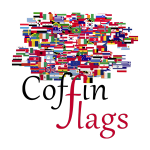Description
 Niger or the Niger, officially the Republic of the Niger, is a landlocked country in West Africa named after the Niger River. Niger is bordered by Libya to the northeast, Chad to the east, Nigeria to the south, Benin to the southwest, Burkina Faso and Mali to the west, and Algeria to the northwest. Niger covers a land area of almost 1,270,000 km2 (490,000 sq mi), making it the largest country in West Africa. Over 80% of its land area lies in the Sahara Desert. The country’s predominantly Islamic population of about 22 million live mostly in clusters in the far south and west of the country. The capital and largest city is Niamey, located in Niger’s southwest corner.
Niger or the Niger, officially the Republic of the Niger, is a landlocked country in West Africa named after the Niger River. Niger is bordered by Libya to the northeast, Chad to the east, Nigeria to the south, Benin to the southwest, Burkina Faso and Mali to the west, and Algeria to the northwest. Niger covers a land area of almost 1,270,000 km2 (490,000 sq mi), making it the largest country in West Africa. Over 80% of its land area lies in the Sahara Desert. The country’s predominantly Islamic population of about 22 million live mostly in clusters in the far south and west of the country. The capital and largest city is Niamey, located in Niger’s southwest corner.
The Flag of Niger has been the national symbol of the West African Republic of Niger since 1959, a year prior to its formal independence from France. It uses the national colours of orange, white and green, in equal horizontal bands, with an orange roundel in the centre. The flag forms one of the official national symbols of the Republic of Niger, with the coat of arms of Niger, the National Anthem (“la Nigérienne”), the crest (used in the centre of the coat of arms), and the motto: “Fraternité, Travail, Progrès”. These form Article 1 of the first part of the 1999 Constitution of Niger. The flag is similar to the Flag of India, although the ratio, shade of orange, and symbol in the centre differ. A common interpretation is that the upper orange band represents the northern regions of the Sahara Desert (though this is sometimes said to be the Sahel), the centre white band represents purity (though this is sometimes said to be the River Niger), and the lower green band represents both hope and the fertile regions of southern Niger. The orange circle in the centre band is said to represent the sun or independence.







